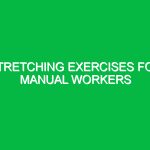Understanding Manual Handling Risk Assessment
Manual handling risk assessment is a crucial component within the Health, Safety, and Environment (HSE) domain. It involves identifying, analyzing, and evaluating the risks associated with manual handling tasks to prevent workplace injuries. According to the Health and Safety Executive (HSE), manual handling includes any transporting or supporting of a load, including lifting, lowering, pushing, pulling, or carrying. With a significant percentage of occupational injuries resulting from improper manual handling, the relevance of effective risk assessment cannot be overstated.
This assessment is not just a tick-box exercise; it serves to foster a culture of safety, ensuring that employees can perform their tasks without the looming threat of injury. The overarching goal is to minimize risks, enhance safety practices, and ultimately protect the workforce. In this article, we will delve into the various hazards associated with manual handling, explore safety precautions, and discuss the regulations that govern this critical aspect of workplace safety.
Identifying Hazards and Risks in Manual Handling
When conducting a manual handling risk assessment, it is imperative to identify potential hazards that could lead to injuries. There are several categories of risks associated with manual handling, including:
Physical Risks
Physical risks primarily involve musculoskeletal disorders (MSDs), which can arise from lifting heavy objects, repetitive movements, or awkward postures. For instance, a warehouse employee who frequently lifts boxes without proper technique may develop chronic back pain or strain. According to a case study published in the *Journal of Occupational Health*, workers in physically demanding jobs reported a higher incidence of MSDs, highlighting the need for proper risk assessment.
Environmental Risks
Environmental factors play a significant role in manual handling safety. Slippery floors, inadequate lighting, and cluttered workspaces can increase the likelihood of accidents. For example, consider a retail employee tasked with restocking shelves. If the aisles are poorly lit and cluttered, the risk of tripping while carrying a load escalates. Ensuring that the environment is conducive to safe manual handling is essential.
Psychosocial Risks
Psychosocial factors, such as stress and fatigue, can also contribute to manual handling risks. An overworked employee may rush through tasks, neglecting safety protocols. Anecdotal evidence from various industries suggests that employees who felt pressured to meet tight deadlines were more likely to adopt unsafe lifting techniques, leading to injuries.
Best Practices for Manual Handling Safety
After identifying potential hazards, the next step is to implement effective safety precautions. Here are several best practices that organizations can adopt to mitigate risks associated with manual handling:
1. Training and Education
Educating employees about proper manual handling techniques is paramount. Training should encompass the mechanics of lifting, carrying, pushing, and pulling. Interactive workshops that demonstrate safe techniques can significantly reduce the risk of injuries. For instance, a study by the *British Safety Council* found that companies that implemented comprehensive training programs saw a 30% reduction in manual handling injuries within a year.
2. Ergonomic Assessments
Conducting ergonomic assessments can help in designing workspaces that minimize strain on the body. Adjusting the height of work surfaces, using mechanical aids, and ensuring that loads are stored at waist height can significantly reduce the risk of injury. For example, a manufacturing facility that restructured its assembly line to allow workers to perform tasks at eye level reported fewer injuries related to awkward postures.
3. Implementing Mechanical Aids
Where feasible, organizations should invest in mechanical aids such as trolleys, hoists, and forklifts. These tools can alleviate the physical burden on employees, allowing them to transport heavy loads without risking injury. A logistics company that introduced electric pallet jacks noted a marked decrease in back injuries among its staff.
4. Encouraging Reporting and Feedback
Creating a culture where employees feel comfortable reporting unsafe conditions is vital. Regular feedback sessions can help identify ongoing issues and areas for improvement. An employee working in a shipping department might notice that certain loads are consistently too heavy. Encouraging such feedback can lead to better risk management practices.
5. Regular Review and Update of Risk Assessments
Manual handling risk assessments should not be static. Regular reviews and updates are essential to adapt to changes in work processes, equipment, or employee health. A construction site that frequently updates its risk assessments based on project changes experiences fewer accidents compared to those that rely on outdated evaluations.
Regulations and Standards Governing Manual Handling
Understanding the regulatory landscape surrounding manual handling is crucial for compliance and safety. Various laws and guidelines exist to ensure that organizations uphold the highest safety standards.
1. The Manual Handling Operations Regulations 1992
In the UK, the Manual Handling Operations Regulations 1992 require employers to avoid hazardous manual handling as far as reasonably practicable. If avoidance is not possible, employers must assess the risks and implement appropriate measures to reduce the risk of injury.
2. The Health and Safety at Work Act 1974
This overarching legislation places a duty on employers to ensure the health, safety, and welfare of employees at work. It emphasizes the importance of risk assessments in maintaining a safe working environment, which includes manual handling tasks.
3. The Control of Substances Hazardous to Health (COSHH) Regulations
While primarily focused on hazardous substances, COSHH also encompasses the handling of materials that can pose risks to health, including heavy or awkward loads. Employers must ensure that such materials are handled safely to prevent injuries.
Conclusion: The Importance of Manual Handling Risk Assessment
Manual handling risk assessment is not merely a regulatory obligation; it is a critical strategy for safeguarding employees and promoting a culture of safety. By identifying potential hazards, implementing best practices, and adhering to relevant regulations, organizations can significantly reduce the risk of injuries associated with manual handling tasks.
As the landscape of work continues to evolve, the importance of manual handling risk assessments remains constant. Organizations that prioritize these assessments not only protect their workforce but also enhance productivity and morale. Ultimately, the goal is to ensure that everyone can perform their duties without the threat of injury, fostering a safer, healthier workplace for all.


